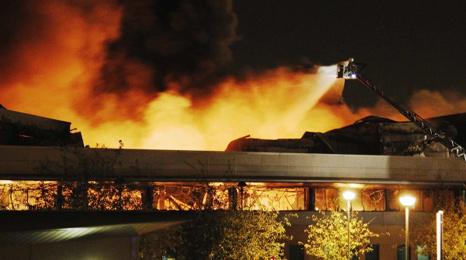London riots: What tactics could be used to end unrest?
- Published
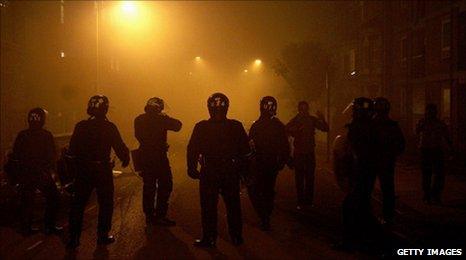
6,000 police were deployed on 9 August, 16,000 are expected on 10 August
After a third night of rioting and looting in London and other parts of England, there have been calls for police to be able to use water cannon and even for the army to help stop the violence.
There are several different tactics which have been used in the past to control riot situations - politicians and the public will be discussing many of these as they try and find a way to control the unrest.
WATER CANNON
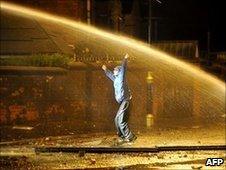
A man is sprayed with a water cannon in Northern Ireland
There have been suggestions on Twitter and other social networking sites that police should be able to use water cannon.
Water cannon have never been deployed on the British mainland but they are used by police in Northern Ireland.
They are also used in many countries around Europe - Belgian police sprayed English football hooligans to stop violence at Euro 2000.
Home Secretary Theresa May appeared to rule out water cannon, saying: "The way we police is by consent."
BATON ROUNDS
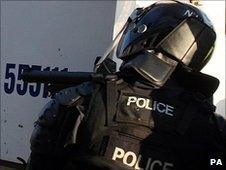
A police officer fires baton rounds during unrest in Northern Ireland
Baton rounds are non-lethal pellets made from rubber or plastic, fired from riot guns with the aim of controlling violent crowds.
Conservative MP Patrick Mercer, a former Army officer, says they were used as a matter of course during recent riots in Northern Ireland, along with water cannon.
He thinks police in England should have the option to deploy them too.
"They should have the tools available and they should use them if the commander on the ground thinks it's necessary.
"I don't think we have necessarily got to mollycoddle Englishmen because we don't mollycoddle Irishmen," he added.
But after violence broke out at student protests in London in December 2010, the Metropolitan Police ruled out using what it called "paramilitary models of policing".
"We don't want to engage in some sort of arms race with thugs and hooligans," the then commissioner Sir Paul Stephenson added.
ARMY
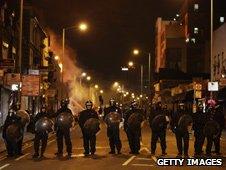
Police say there are currently no plans to bring in the Army to stop riots
Another option to control crowds would be to bring the Army in to help the police - that's a decision only the government can make.
Acting Metropolitan Police Commissioner Tim Godwin said there were no plans to do that.
London's deputy mayor Kit Malthouse said he wouldn't be in favour of Army involvement either.
"I'd be very reluctant to see that happen on the streets of London.
"I just don't think that's an option at the moment.
Footballer Rio Ferdinand tweeted supporting army involvement.
"It seems these kids/people have no fear or respect for the police... maybe the army will get that respect??" he said.
CURFEW
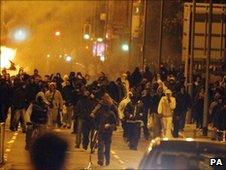
Hundreds of rioters took to the streets of Toxteth in Liverpool
Curfews have also been used in riot situations to ban people from being on the streets at night.
For example during countrywide riots in France in 2005, under-16s were banned from the streets unless with an adult between 10pm and 6am, in 30 towns and cities.
The sale of petrol was also banned during those hours.
Labour MP Diane Abbott, whose Hackney North and Stoke Newington constituency saw serious rioting and looting, said she would be in favour of curfew.
"I'm not saying that it is definitely the way forward but it is something we have to consider.
"These young people, who seem to have no stake in society, are trashing their own communities.
"We cannot continue to have increasing numbers of looters on the streets night after night," she said.
But she admitted curfews were "very hard to enforce".
- Published9 August 2011
